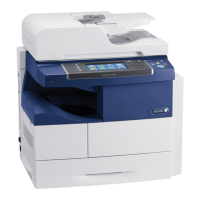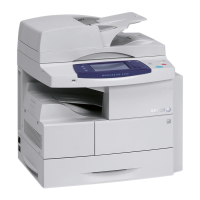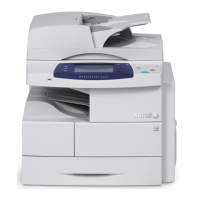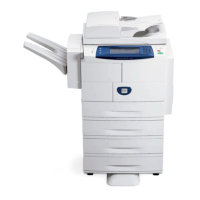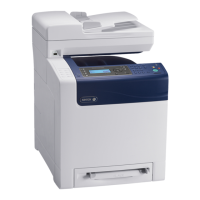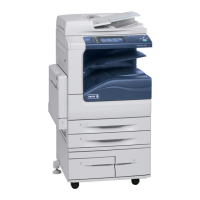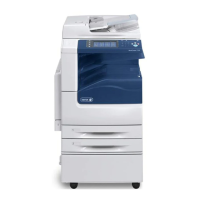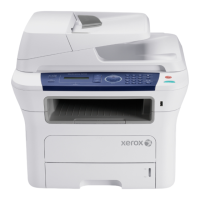WorkCentre Pro 423/428 2-102 CHAPTER 2 TROUBLESHOOTING
03/02 Level 2 Troubleshooting
l S/T point
An S/T point is a connection point between devices connected to an ISDN line. The
connection points are named U, T, S, and R sequentially from the network side. The names
represent mere connection points but not physical things.
Device Description Actual example
NT1 Network terminating device (when viewed from the office
side) realizing power feed and other functions
DSU
NT2 Device with line switching and concentration functions PBX, etc.
TE1 ISDN terminal with I interface G4 Fax, etc.
TA Adapter to connect a non-ISDN terminal to ISDN TA/router, etc.
TE2 Conventional terminal with no I interface (Non-ISDN
terminal)
G3 Fax, etc.
NT1 (DSU) is an essential device but the other devices are combined depending on the
status as follows:
l NT1+NT2+TE1 (above connection example 1)
l NT1+NT2+TA+TE2 (Connection example 2)
l NT1+TA+TE2 (Connection example 3)
l NT1+TE1
An S/T point indicates a connection point between NT1 (DSU) and TE1 or TA when there is
no NT2 (PBX). In NET64, T and S indicate the same connection point because NT2 is
usually not used. Then the point is expressed as S/T.
The U, T, S, and R points indicate the demarcation points of responsibility about each
terminal. They also define the ranges of responsibility for maintenance.
The U point is the demarcation point between the class-1 carrier and user. NET64 uses a
two-core cable (NET1500: optical cable) from the network to NT1 (DSU) and a four-core
cable of RJ45 from NT1 to TE1 or TA.
A TA/router with built-in DSU has NT1 and TA in one cabinet but allows TE1 (ISDN terminal)
connection by taking the S/T point outside. A model with no S/T point allows only TE2
connection. A router supporting an S/T point may have a built-in DSU.
l Bus wiring
Bus wiring is used to connect several terminals to an ISDN line. The figure below shows this
wiring. Two pairs of twisted-pair wires are used to make the polarities (TA, TB, RA, and RB)
common between DSU and all connection blocks.
Since the polarities of wiring screws in a connection block may be different, check the pin
numbers of RJ45 before wiring.
For bus wiring, note the distance from DSU to the farthest terminal.
Short-distance bus connection (terminals at random intervals on a bus): 150 m max.
Long-distance bus connection (all terminals centralized within 50 m on a bus): 550 m max.
Since the ISDN cable between a connection block and a terminal is not stranded (paired-
wire), do not use a long cable beyond 4 meters.
RA
TA
TB
RB
TB
RA
TB
RB RA
TA
TA
block pin No.
D
S
U
Use twisted-pair
Pin8 … 1
Terminator
onnection
example 1
U
point
NT1 NT2
TE1
NT1
NT2 TA
TE2
NT1
TA
TE2
S/T point
Network side
4-core cable
T
point
S
point
R
point
onnection
example 2
Network side
T
point
S
point
onnection
example 3
Network side
R point
U
point
U point
2-core cable
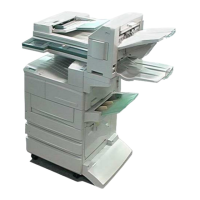
